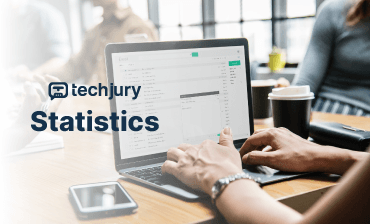The Digital Communication Renaissance
Imagine a world where communication transcends physical boundaries, where information flows seamlessly across continents, and where technology transforms how we connect, collaborate, and share knowledge. This isn‘t a futuristic fantasy—it‘s the reality Gmail has meticulously crafted over the past two decades.
When Google launched Gmail on April 1, 2004, few could have predicted the profound impact this seemingly simple email platform would have on global communication. What began as an experimental project has evolved into a technological ecosystem that fundamentally reshapes how billions of people interact daily.
The Genesis of a Digital Revolution
The story of Gmail is more than a technological narrative—it‘s a testament to human innovation and the relentless pursuit of connecting people. Paul Buchheit, the brilliant mind behind Gmail‘s initial development, didn‘t just create an email service; he reimagined digital communication‘s entire paradigm.
In an era dominated by limited storage and clunky interfaces, Buchheit‘s approach was revolutionary. By writing Gmail entirely in JavaScript, he created a faster, more responsive platform that could handle significantly larger email volumes. Where competitors offered mere megabytes of storage, Gmail boldly provided a gigabyte—a quantum leap in digital storage capabilities.
Technological Innovation: Beyond Traditional Email
The Machine Learning Transformation
Gmail‘s true genius lies not just in its interface but in its intelligent backend infrastructure. Machine learning algorithms have transformed email from a simple communication tool into a sophisticated, context-aware platform.
Consider the platform‘s spam protection mechanism: Gmail‘s algorithms process and filter nearly 10 million potentially malicious emails every minute. This isn‘t just filtering; it‘s a complex, adaptive system that learns and evolves with each interaction. By analyzing patterns, sender behaviors, and user responses, the system creates an increasingly sophisticated defense mechanism against digital threats.
Storage and Cloud Integration
The platform‘s storage strategy represents a masterclass in user-centric design. When Gmail launched its unified 15GB storage model in 2013, it wasn‘t merely about providing space—it was about creating an integrated digital ecosystem. Users could now seamlessly share storage across Gmail, Google Drive, and Google Photos, breaking traditional platform boundaries.
Global Communication Dynamics
User Demographics and Behavioral Insights
Gmail‘s user base is a microcosm of global digital engagement. With 1.8 billion monthly active users, the platform transcends traditional communication barriers. But who are these users, and how do they interact with this digital platform?
The demographic breakdown reveals fascinating insights. The average Gmail user is 31 years old, representing the digitally native generation that seamlessly integrates technology into daily life. Interestingly, 61% of users between 18-29 and 54% between 30-44 demonstrate the platform‘s multigenerational appeal.
Gender distribution shows a slight male majority, with 52.74% male users compared to 47.26% female users. However, these numbers tell a more nuanced story about digital communication preferences across different demographic segments.
Security and Privacy: The Digital Trust Framework
In an era of increasing cyber threats, Gmail has positioned itself as a fortress of digital security. The platform‘s approach goes beyond traditional protection mechanisms, integrating advanced authentication techniques and proactive threat detection.
The statistics are compelling: 30% of users have experienced data breaches, primarily due to weak password practices. Recognizing this vulnerability, Gmail has implemented stringent password requirements, encouraging users to create complex, unique passwords.
Machine learning plays a crucial role in this security ecosystem. By analyzing millions of email interactions, the system can detect and neutralize potential threats with remarkable precision. This isn‘t just protection; it‘s an adaptive, intelligent shield that evolves with emerging digital risks.
Mobile Revolution and Cross-Platform Accessibility
The mobile revolution has fundamentally transformed how we consume digital content, and Gmail has been at the forefront of this transformation. An astounding 75% of Gmail users now access their emails via mobile devices, reflecting a broader shift in digital consumption patterns.
This mobile-first approach isn‘t just about accessibility; it‘s about creating a seamless, integrated user experience across different platforms and devices. Whether you‘re checking emails on a smartphone, tablet, or desktop, Gmail ensures a consistent, intuitive interface.
Economic and Social Implications
Beyond its technological capabilities, Gmail represents a significant economic and social platform. For startups and small businesses, the platform offers more than communication—it provides an integrated ecosystem for collaboration and growth.
Consider the statistics: 90% of US startups utilize Gmail, demonstrating its critical role in modern business infrastructure. The platform‘s integration with Google Workspace allows companies to create professional email domains, access collaborative tools, and streamline communication processes.
Future Trajectories: The Next Digital Frontier
As we look toward the future, Gmail is not just adapting to technological changes—it‘s actively shaping them. Emerging trends like artificial intelligence, enhanced personalization, and more sophisticated security protocols are likely to define the platform‘s next evolutionary phase.
Predictive email management, advanced natural language processing, and more intuitive user interfaces are just the beginning. The future of digital communication will be characterized by platforms that can anticipate user needs, provide context-aware interactions, and seamlessly integrate across different digital ecosystems.
Conclusion: A Digital Communication Paradigm
Gmail‘s journey from a simple email service to a global communication platform illustrates technology‘s transformative power. It‘s a reminder that innovation isn‘t just about creating new tools—it‘s about reimagining how we connect, collaborate, and share knowledge.
For professionals, entrepreneurs, and individuals navigating the digital landscape, understanding platforms like Gmail is no longer optional—it‘s essential. As digital communication continues to evolve, those who adapt, learn, and leverage these technologies will be best positioned to thrive in an increasingly connected world.
The story of Gmail is far from complete. It‘s an ongoing narrative of human creativity, technological innovation, and the endless possibilities of digital connection.
